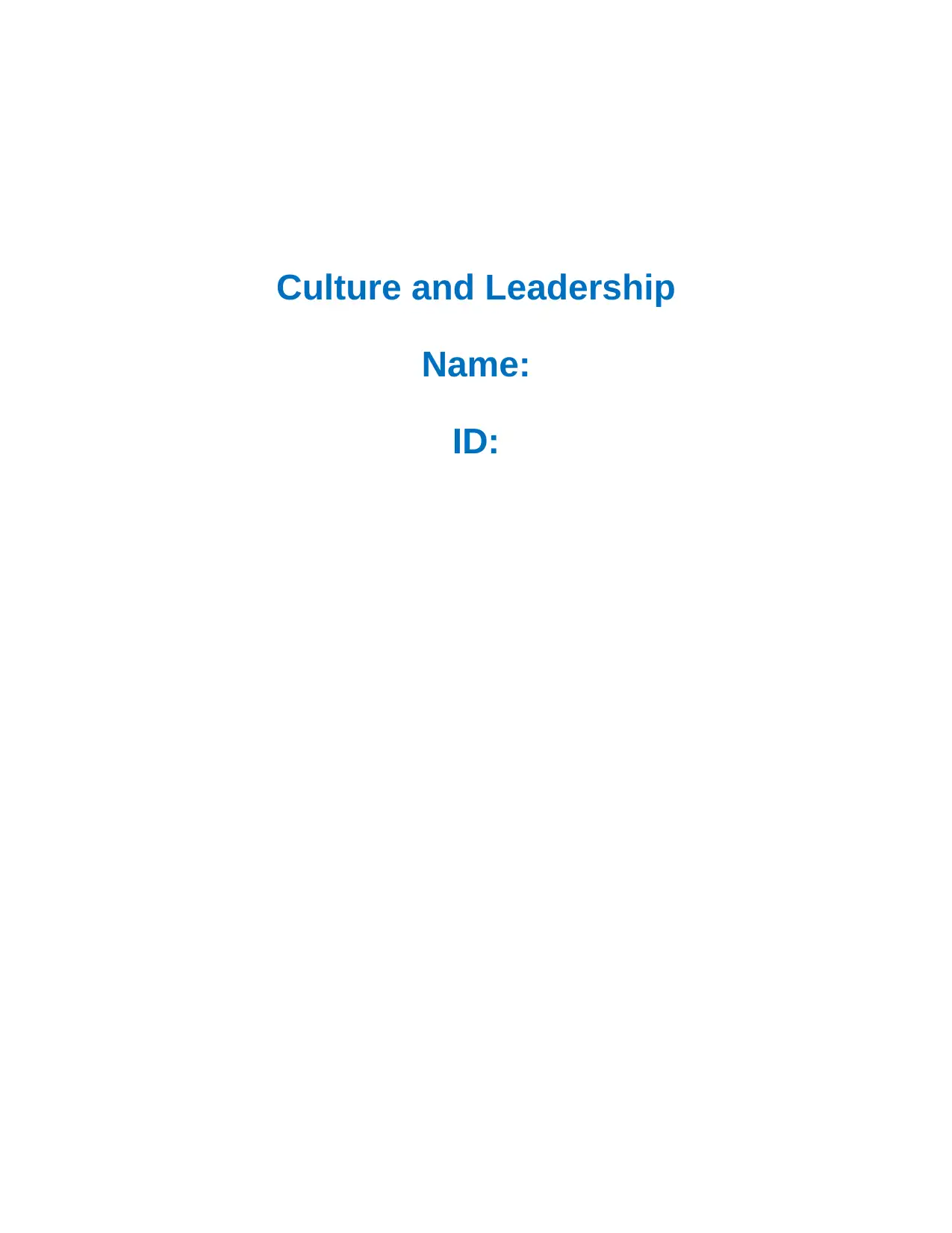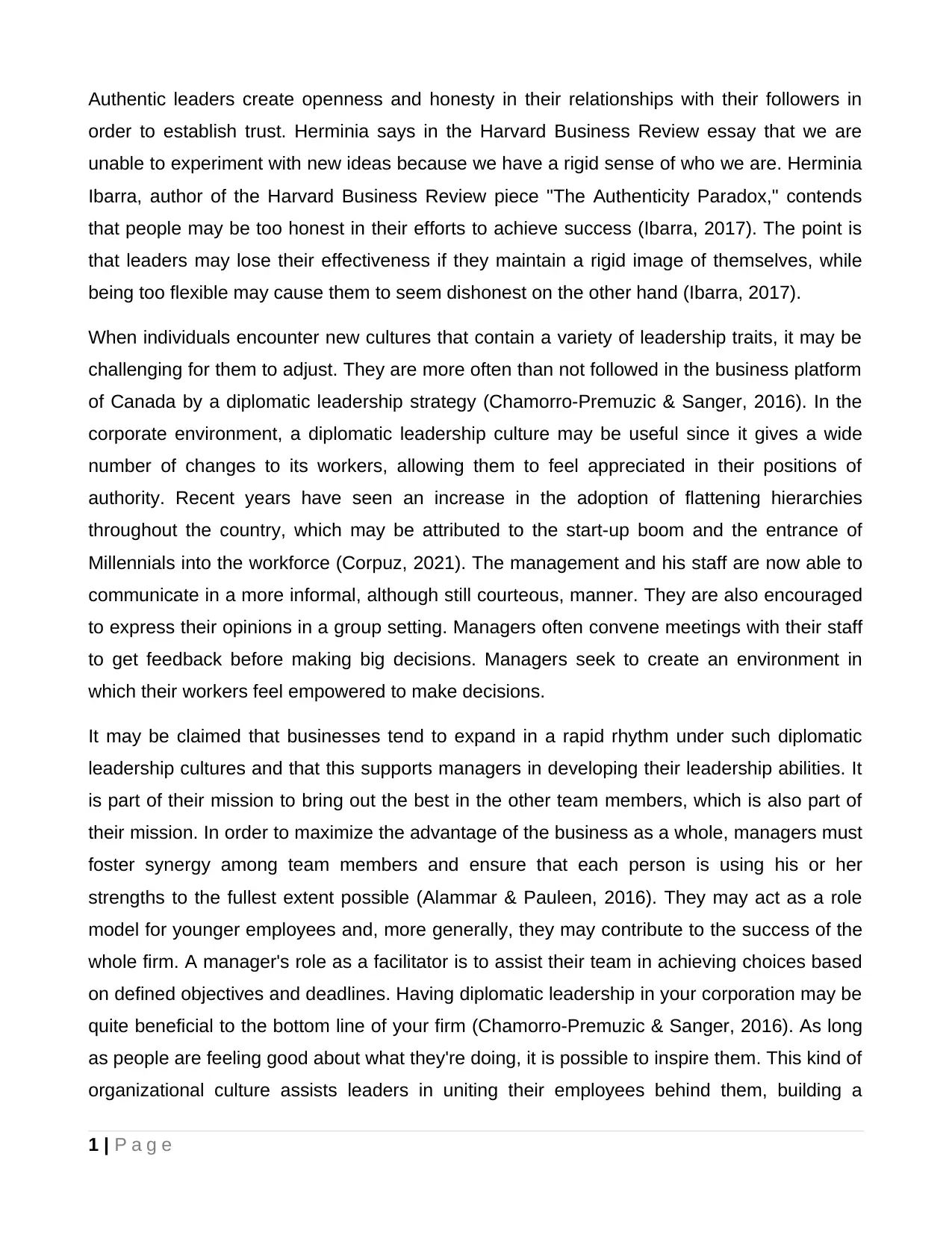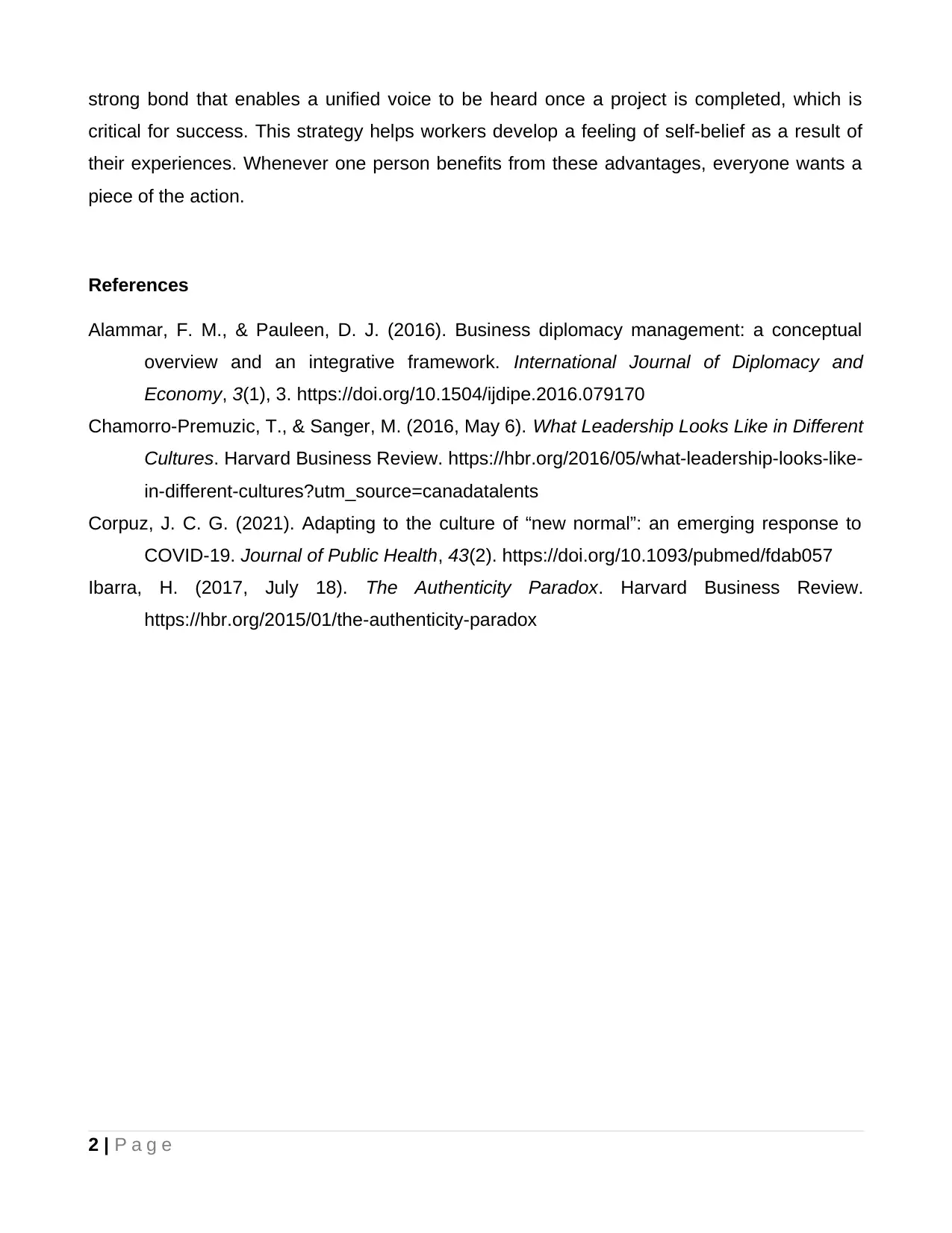Cultural Influences on Leadership in Canada: A Comprehensive Report
VerifiedAdded on 2023/02/03
|3
|711
|33
Report
AI Summary
This report analyzes leadership styles within the Canadian cultural context, emphasizing the prevalence of diplomatic leadership strategies. It explores how flattening hierarchies and the influx of Millennials have influenced communication and decision-making processes in Canadian workplaces. The report discusses the importance of creating an environment where employees feel empowered and valued, highlighting how this approach fosters synergy and supports leadership development. It references key concepts such as authentic leadership, the authenticity paradox, and business diplomacy, illustrating their relevance in building trust, promoting employee engagement, and driving overall organizational success. The report also examines how managers can act as facilitators, fostering teamwork and ensuring that each person utilizes their strengths to achieve defined objectives and deadlines. Ultimately, the report underscores the benefits of diplomatic leadership in enhancing business outcomes by uniting employees and creating a strong sense of self-belief.
1 out of 3









![[object Object]](/_next/static/media/star-bottom.7253800d.svg)